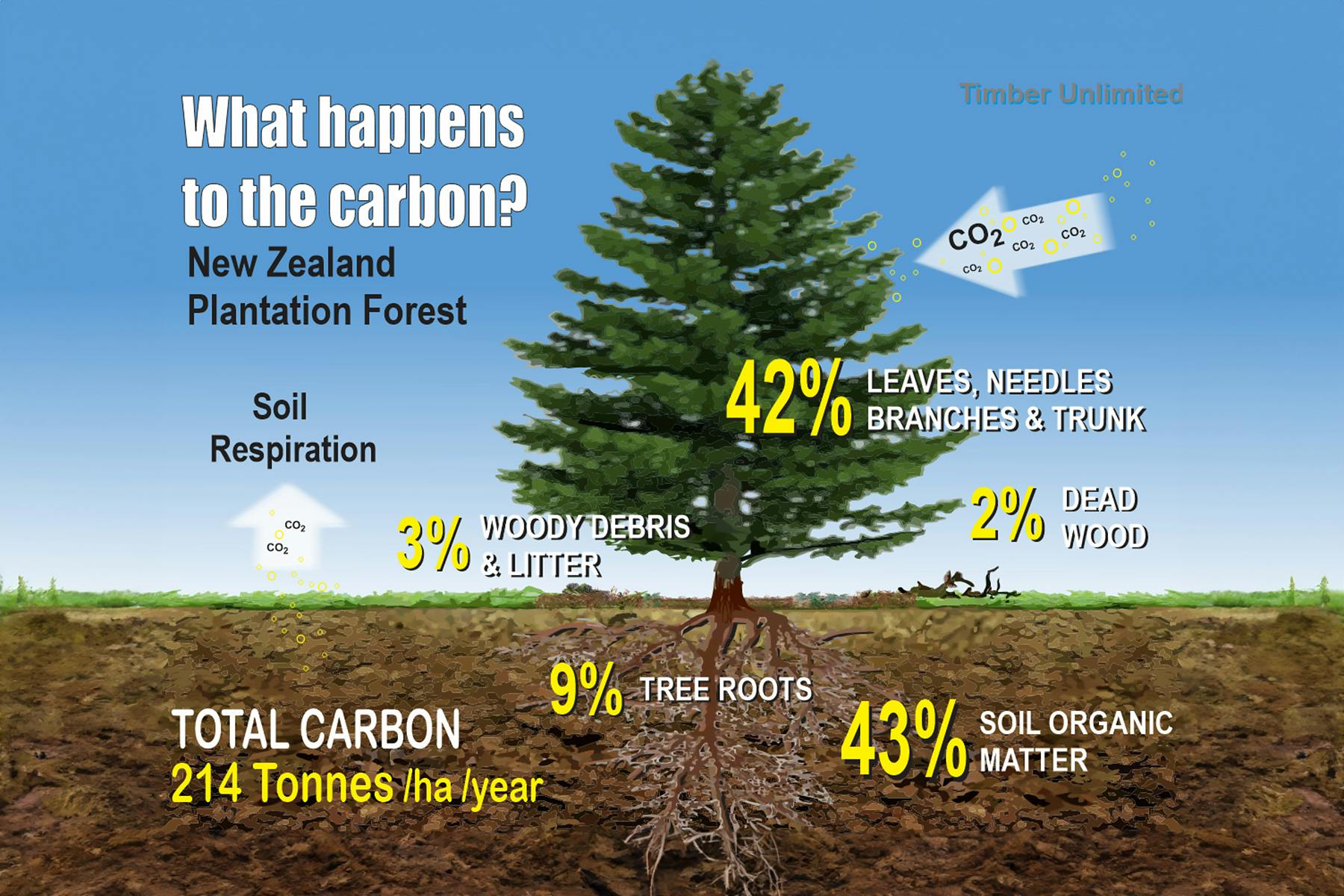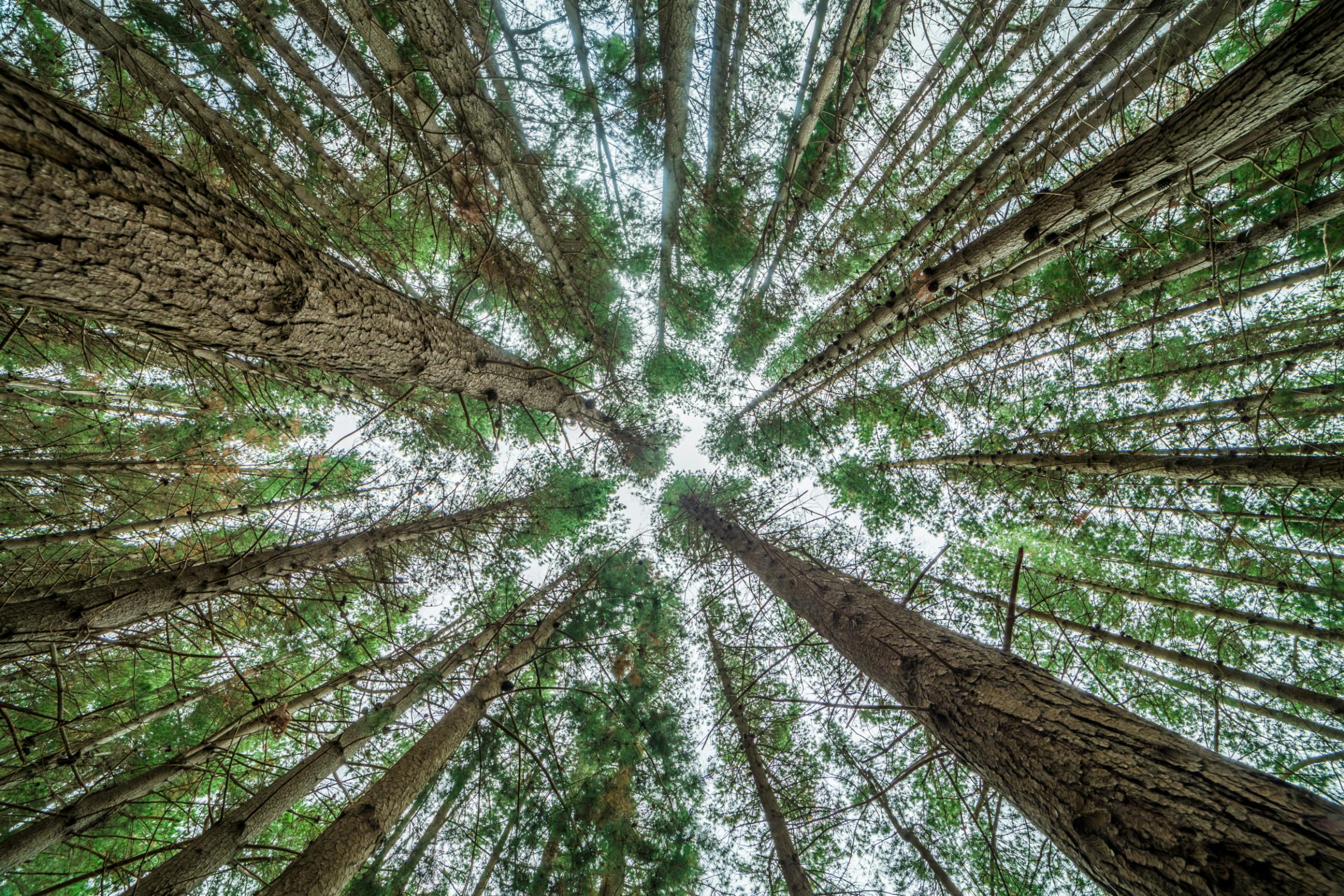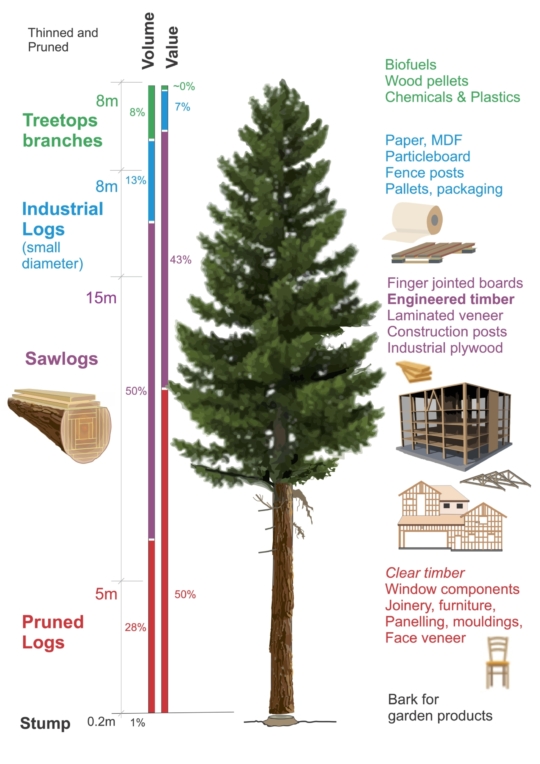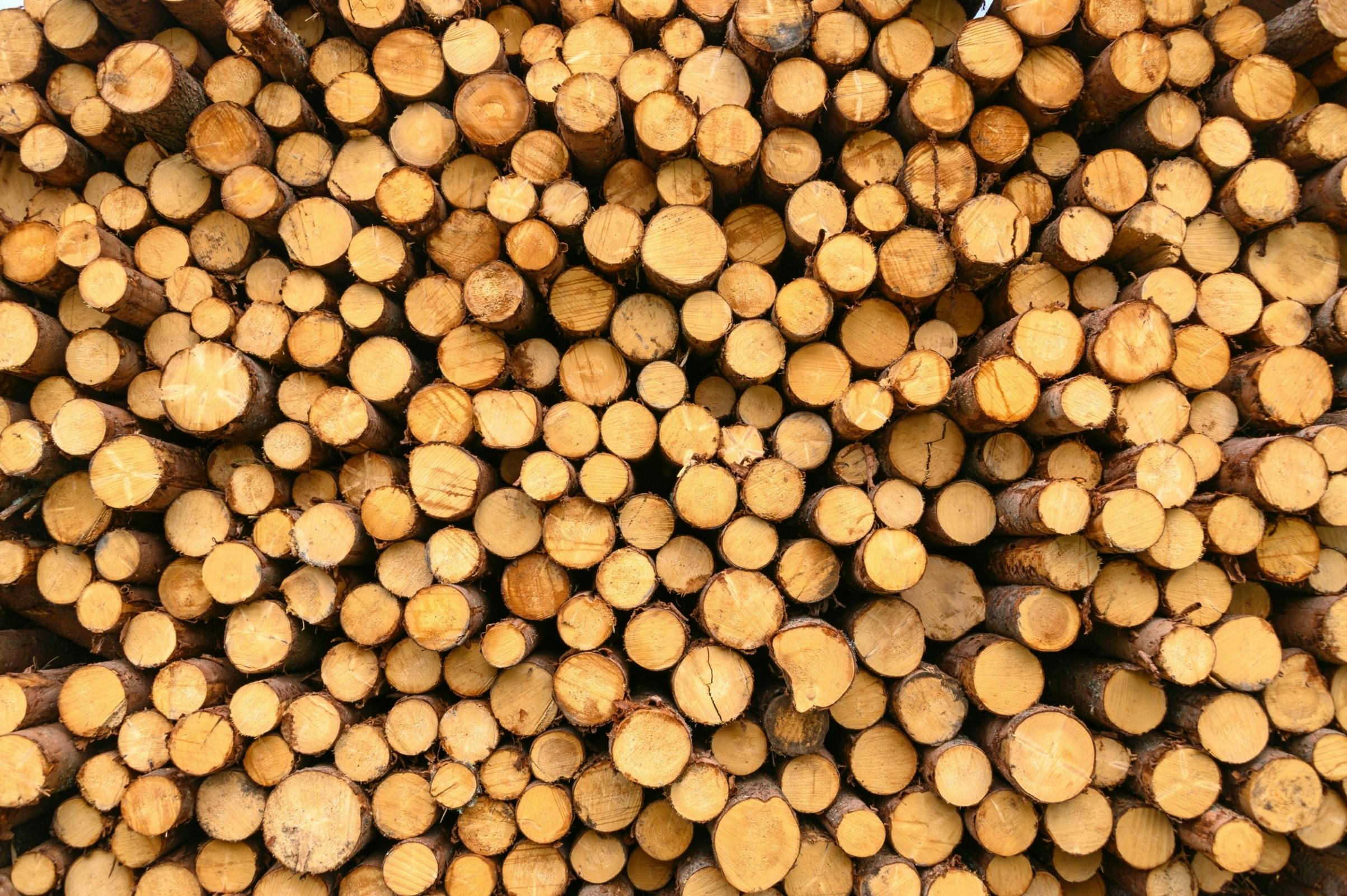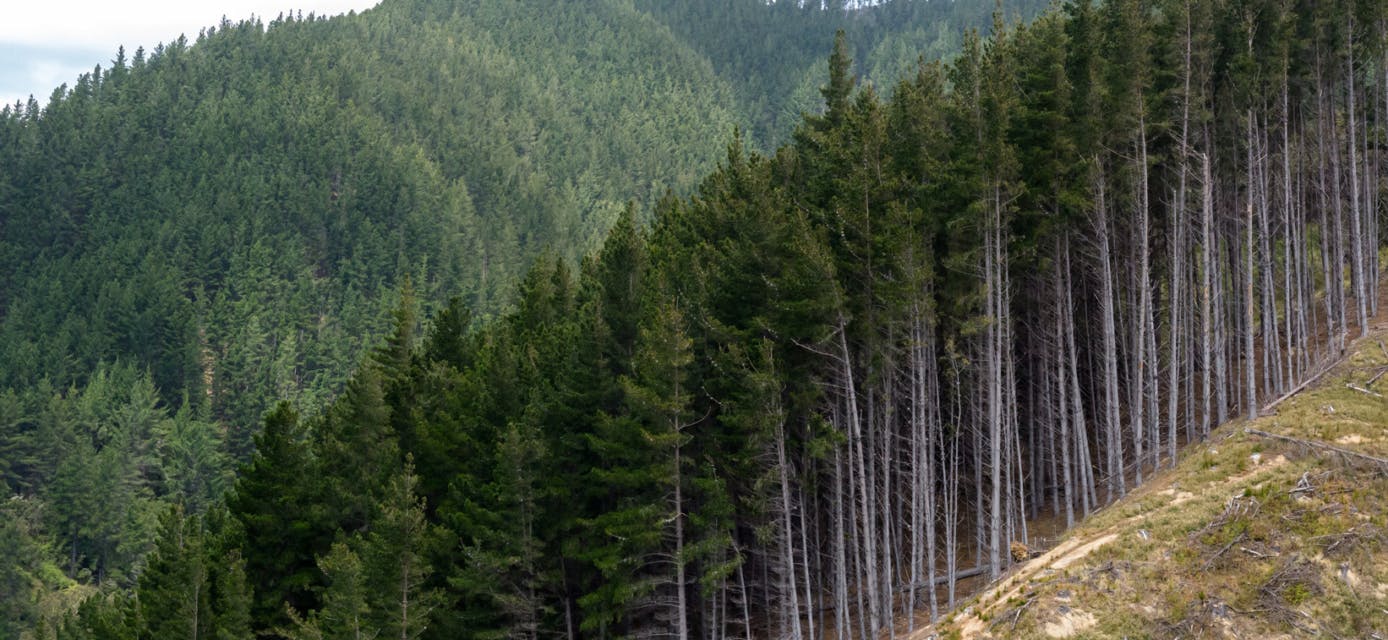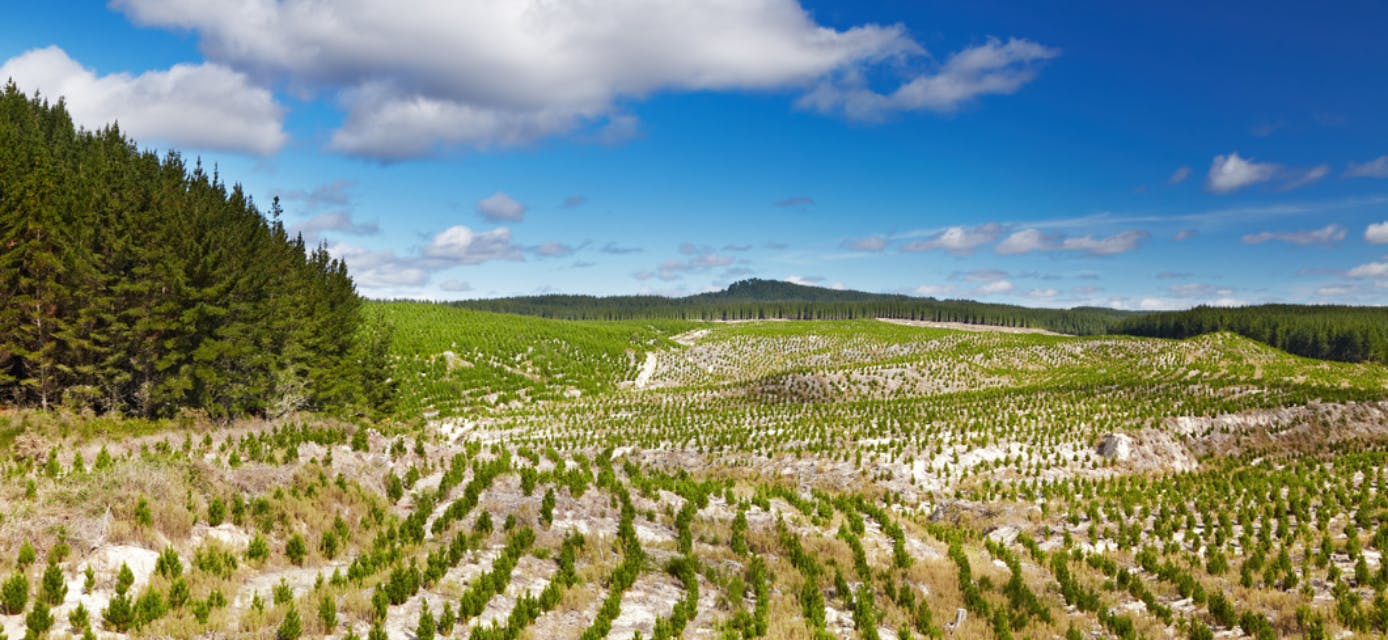Forests are nature’s most effective carbon pumps. They act as critical buffers, helping to limit the severity of climate change by absorbing carbon dioxide from the atmosphere.
Trees capture carbon through photosynthesis, which is stored in the tree and transferred to the soil. This diagram shows how the carbon is distributed into the wood, roots and soil. New Zealand native forest annually stores 337 tonnes of carbon per hectare and planted forests approximately 214 Tonnes per hectare.
In plantation forests, the overall CO2 capture ratio is leaves, trunk and branches 42.3%, dead wood 2.3%, debris and litter 3.3%, tree roots 9% and soil organic matter 43%.
Additionally, for New Zealand native forests, the overall capture ratio is leaves, trunk and branches 42.8%, dead wood 13.1%, debris and litter 6.6%, tree roots 10% and soil organic matter 27.3%.

